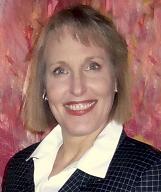Denver Area Access Users Group
General Meeting Presentation
Tuesday, November 4, 2014

Write a Best Seller: Creating Application User Guides
This presentation will show the planning process, made repeatable, for software-application programmers and their team in creating and publishing Application User Guides for their customers.
There are many types of support documentation and this presentation's focus is on the Application End User Guide.
Having good User Guide software documentation frees up the time which programmers usually use to answer real-time end users questions when the user encounters application errors or has questions. A User Guide helps an end user accomplish their work quickly without having to call a developer. A developer is then free to build better, more efficient algorithms.
In the framework of end user application support, there exists Tier I, Tier II, and Tier III, end user support. These tiers help identify the support given to end users with problems and questions when using an application. Programmers usually help solve Tier III or IV level software problems and questions, depending on the size of the company. A User Guide provides Tier I help to the end user.
Overall, good software documentation is specific, concise, and relevant, providing all the information important to the person using the software. The Tier I support level User Guide documentation contains answers for end users of the most frequently asked questions and provides solutions to the most frequently occurring problems. Offloading a programmer from these recurring interruptions is best when provided by a professional technical writer who creates User Guides and other support documentation.
Constance Wells is a leading expert on technology management of large-scale efforts comprising portfolios of projects for government and business requiring contractual documentation (System Guides, User Manuals, Quick Guides, Help Desk Guides, End User Appl Training, etc.). As the owner of Business Intell Technology, Wells partners with executives to meet performance goals, drive change management efforts across the enterprise, write proposals and respond successfully to RFPs. She manages IT portfolio project budgets from $500K to $300 million, builds and leads teams, and recommends the appropriate staff and resource for global IT projects.